Additional notes (click to expand)
Medicinal
Most of its properties are mediated by the opiate (rhoeadine) content of the corn Poppy, which is little noted upon in modern literature.
Oakeley, Dr. H. F. . (2013). The Gardens of the Pharmacopoeia Londinensis.
link
Culpeper: (in The English Physitian, 1652) ‘... is good to prevent the falling sickness [epilepsy] ... ‘procuring rest and sleep’, for curing coughs and sore throats, treating menorrhagia, agues (aches), frenzies (delirium), pleurisy and toothache; and if applied as a poultice for reducing inflammations and erysipelas (St. Anthony’s Fire).
Culpeper, N. (1652). The English Physitian. London.
The petals were used to make a sedative syrup for children according to Sowerby’s (1818) English Botany, vol. 5, which states that poppy seeds contain no opium (they contain rhoeadine, an opiate).
Sowerby (1818) English Botany vol 5
Chemical extracts from the petals have been tested for the potential in the prevention of skin cancer (Ennamany et al., 2013).
Wearn, J. (2014), 'Tale of two poppies', Kew Gardens at War, date of viewing 06/08/14 http://www.kew.org/discover/blogs/tale-of-two-poppies
link
POM Rheodine, thebaine for etorphine
Nomenclature
Other common names: African rose; blind-eyes; blue-eyes; canker; canker rose; cheese couls; cheese cowl; cock rose; cop rose; copper rose; cornflower; corn poppy; corn rose; field poppy; flanders poppy; headache plant; headaches; prophetic leaf; red cornflower; red poppy; redweed; shirley poppy; thunder flower; wind rose
The Royal Horticultural Society Horticultural Database, available at www.rhs.org.uk
Rhoeas is Greek for 'to drop off' which probably applies to the petals, but could equally apply to its somniferous properties,
Oakeley, Dr. H.F. (2013). Real Medicinal Plants.
Other use
Papaver rhoeas L. Papaveraceae Corn Poppy, Flanders Poppy. Distribution: Temperate Old World. Dioscorides (Gunther, 1959) recommended five or six seed heads in wine to get a good night's sleep; the leaves and seeds applied as a poultice to heal inflammation, and the decoction sprinkled on was soporiferous. Culpeper (1650) ' ... Syrup of Red, or Erratick Poppies: by many called Corn-Roses. ... Some are of the opinion that these Poppies are the coldest of all other - believe them that list [wishes to]: I know no danger in this syrup, so it be taken in moderation; and bread immoderately taken hurts; the syrup cools the blood, helps surfets and may safely be given in Frenzies, Feavers and hot Agues'. Here Culpeper is using the Doctrine of the Humours, in that an excess of a poisonous plant causes death and for the body to become cold, so a smaller dose will be good for fevers. He points out that eating too much bread can make one ill. Culpeper (1652) writes ‘... is good to prevent the falling sickness [epilepsy] ...’ for ‘procuring rest and sleep’, for curing coughs and sore throats, treating menorrhagia, agues (aches), frenzies (delirium), pleurisy and toothache; and if applied as a poultice for reducing inflammations and erysipelas (St. Anthony’s Fire). 'Poppy seeds ease pain and provoke sleep. Your best way is to make an emulsion of them with barley water.’ Contains rhoeadine and thebaine which are both mild analgesics and sedative. Latter is toxic and used to make oxycodone and oxymorphone which are opiate analgesics, and naloxone an antidote to opiates – displaces them from μ-opioid receptors in the brain. Thebaine can cause addiction, convulsions and death. It is mainly used to make powerful μ-opioid agonists, called Bentley compounds, some being 10,000 times more powerful than morphine. One is Etorphine, a μ, δ, and κ opioid receptor agonist 3,000 times more potent than morphine. It is only licensed for use on elephants and other large animals. It is fatal to humans. It is almost instantaneous in action and is almost instantaneously reversed by naloxone and/or diprenorphine. Dihydroetorphine is 12,000 times the strength of morphine. The petals were used to make a sedative for children (Sowerby, 1818).
Oakeley, Dr. Henry F. (2013). Wellcome Library notes.
link
Geographical distribution
- Africa, Macaronesia, Canary Is.
- Africa, Macaronesia, Madeira
- Africa, Northern Africa
- Asia-Temperate, Caucasus
- Asia-Temperate, Western Asia
- Asia-Tropical, Indian Subcontinent, Pakistan
- Europe
Podcast
Papaver rhoeas L.
Family: PAPAVERACEAEGenus: Papaver
Species: rhoeas L.
Common names: Poppy, Corn Poppy, Flanders Poppy
Pharmacopoeia Londinensis name: Papaveris rubri, Paperveris
Distribution summary: N.Africa, W.Asia, Caucasus, Europe
Habit: Annual
Hardiness: H5 - Hardy; cold winter
Habitat: Wasteland and roadsides
Garden status: Currently grown
Garden location: Pharmacopoeia Londinensis 1618 'Fruit' (HSE 4), Pharmacopoeia Londinensis 1618 'Flowers' (HSE 1)
Flowering months: June, July, August
Reason for growing: Medicinal, other use, prescription only medicine
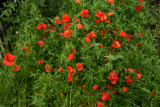

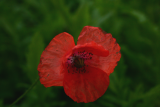
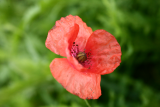
.JPG)


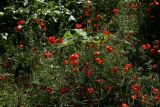
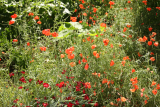

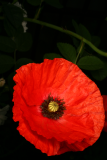

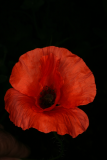
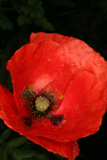
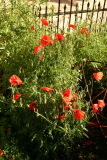


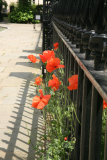
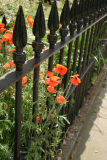
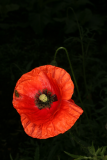

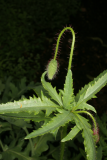
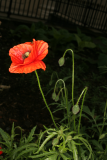

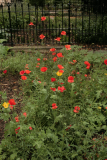
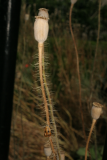

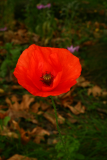
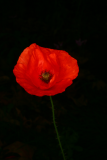
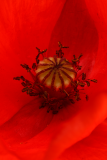
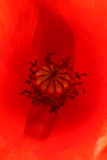
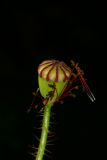

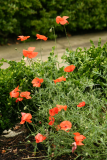
.JPG)
.JPG)